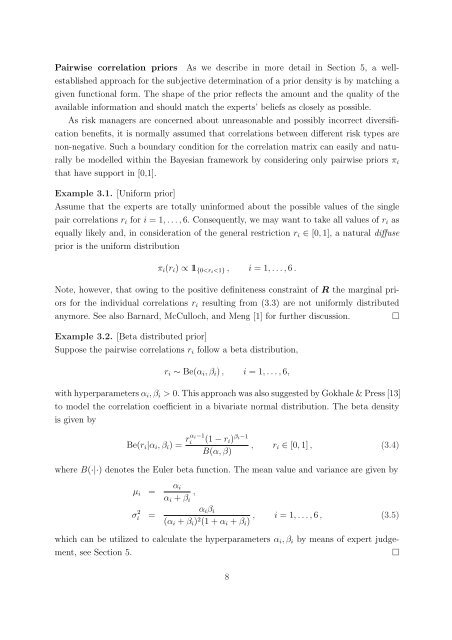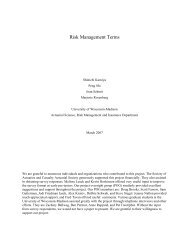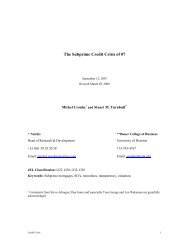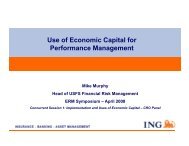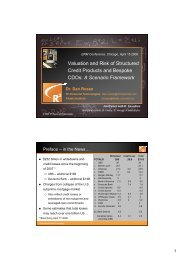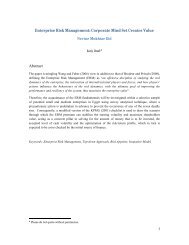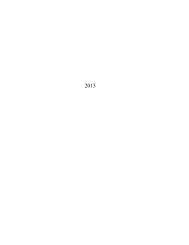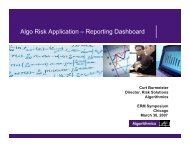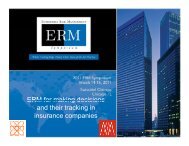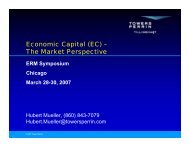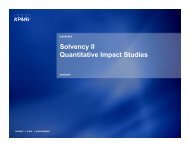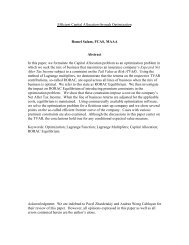Bayesian Risk Aggregation: Correlation ... - ERM Symposium
Bayesian Risk Aggregation: Correlation ... - ERM Symposium
Bayesian Risk Aggregation: Correlation ... - ERM Symposium
You also want an ePaper? Increase the reach of your titles
YUMPU automatically turns print PDFs into web optimized ePapers that Google loves.
Pairwise correlation priors As we describe in more detail in Section 5, a well-<br />
established approach for the subjective determination of a prior density is by matching a<br />
given functional form. The shape of the prior reflects the amount and the quality of the<br />
available information and should match the experts’ beliefs as closely as possible.<br />
As risk managers are concerned about unreasonable and possibly incorrect diversifi-<br />
cation benefits, it is normally assumed that correlations between different risk types are<br />
non-negative. Such a boundary condition for the correlation matrix can easily and natu-<br />
rally be modelled within the <strong>Bayesian</strong> framework by considering only pairwise priors πi<br />
that have support in [0,1].<br />
Example 3.1. [Uniform prior]<br />
Assume that the experts are totally uninformed about the possible values of the single<br />
pair correlations ri for i = 1, . . . , 6. Consequently, we may want to take all values of ri as<br />
equally likely and, in consideration of the general restriction ri ∈ [0, 1], a natural diffuse<br />
prior is the uniform distribution<br />
πi(ri) ∝ 1{0


